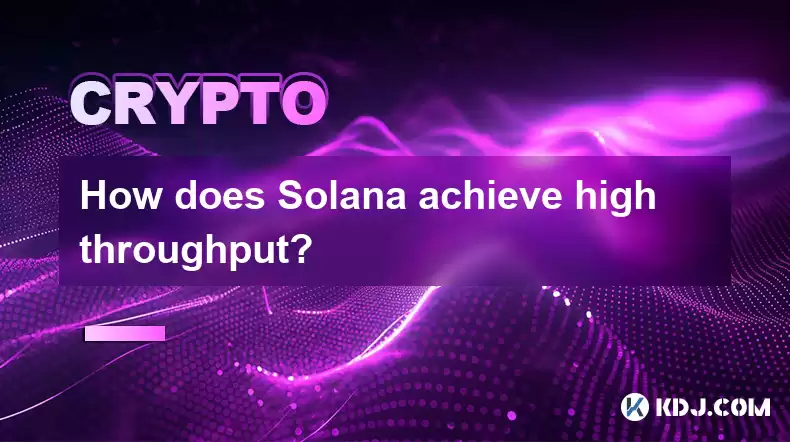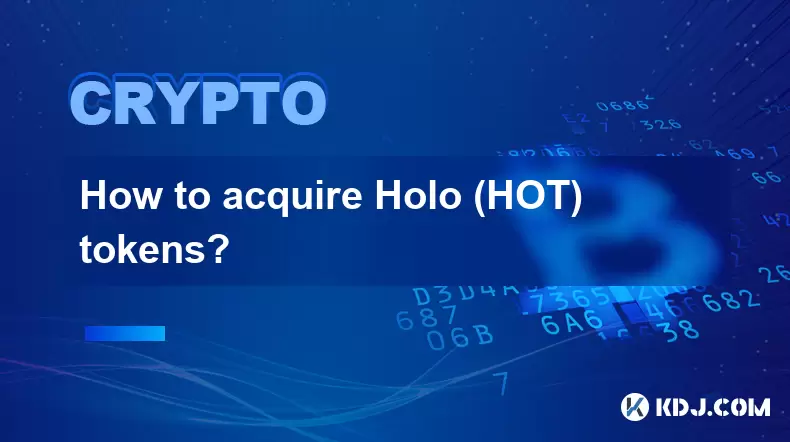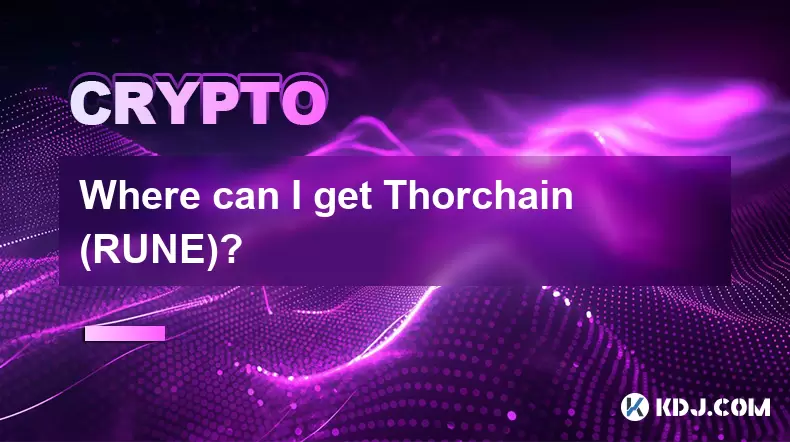-
 Bitcoin
Bitcoin $116700
0.24% -
 Ethereum
Ethereum $3973
4.34% -
 XRP
XRP $3.283
7.68% -
 Tether USDt
Tether USDt $1.000
0.01% -
 BNB
BNB $789.8
2.27% -
 Solana
Solana $176.2
3.31% -
 USDC
USDC $0.9999
0.00% -
 Dogecoin
Dogecoin $0.2238
5.14% -
 TRON
TRON $0.3389
-0.51% -
 Cardano
Cardano $0.7907
4.03% -
 Stellar
Stellar $0.4527
10.02% -
 Hyperliquid
Hyperliquid $41.07
4.27% -
 Sui
Sui $3.794
1.77% -
 Chainlink
Chainlink $19.49
10.40% -
 Bitcoin Cash
Bitcoin Cash $580.9
0.74% -
 Hedera
Hedera $0.2617
4.32% -
 Avalanche
Avalanche $23.41
3.67% -
 Ethena USDe
Ethena USDe $1.001
-0.03% -
 Litecoin
Litecoin $122.4
1.38% -
 Toncoin
Toncoin $3.364
1.49% -
 UNUS SED LEO
UNUS SED LEO $8.988
0.37% -
 Shiba Inu
Shiba Inu $0.00001295
2.82% -
 Uniswap
Uniswap $10.62
5.75% -
 Polkadot
Polkadot $3.922
4.46% -
 Dai
Dai $1.000
0.01% -
 Bitget Token
Bitget Token $4.494
2.15% -
 Monero
Monero $268.0
-1.30% -
 Cronos
Cronos $0.1523
3.68% -
 Pepe
Pepe $0.00001127
4.43% -
 Aave
Aave $285.4
4.85%
How does Solana achieve high throughput?
Solana's remarkable throughput results from a combination of novel innovations, such as Proof-of-History, Sealevel, Turbine, Gulf Stream, Cloudbreak, Pipelining, and specialized node types (Archivers and Validators).
Feb 18, 2025 at 09:54 pm

Key Points of the Article:
- Solana's Proof-of-History Mechanism
- Sealevel for Parallelization
- Turbine for High-Performance Networking
- Gulf Stream for Transaction Forwarding
- Cloudbreak for Efficient Memory Management
- Pipelining for Concurrent Execution
- Archivers and Validators for Data Storage and Verification
How does Solana achieve such high throughput?
Solana's ability to achieve high throughput is predicated on a combination of novel architectural innovations that work in concert to optimize network efficiency and processing speed. Here is an in-depth exploration of some of the key pillars underpinning Solana's exceptional performance:
1. Proof-of-History Mechanism:
Solana employs a unique consensus mechanism called Proof-of-History (PoH), which serves as a distributed clock that generates a verifiable record of the order of events transpiring on the network. Unlike Proof-of-Work or Proof-of-Stake, PoH does not necessitate energy-intensive computations or token accumulation. Instead, it leverages a Verifiable Delay Function (VDF) that cryptographically timestamps events, enabling nodes to establish a consistent ordering of transactions. This streamlined consensus mechanism significantly reduces latency and enhances throughput.
2. Sealevel for Parallelization:
Solana introduces Sealevel, a runtime environment that facilitates the parallel execution of smart contracts. Unlike traditional blockchains that serially process transactions, Sealevel divides transaction processing into smaller units, enabling multiple contracts to execute concurrently within a single block. This parallelization technique dramatically increases the throughput of the network, allowing Solana to handle a vast number of transactions simultaneously without sacrificing security or decentralization.
3. Turbine for High-Performance Networking:
Solana's Turbine protocol optimizes data transmission by employing a gossip-based network structure. Instead of relying on a central server to relay messages, Turbine distributes the responsibility of message propagation across participating nodes. This decentralized network design ensures efficient and reliable data dissemination, minimizing network congestion and maximizing throughput.
4. Gulf Stream for Transaction Forwarding:
Gulf Stream is a transaction forwarding mechanism that optimizes the flow of transactions within the Solana network. It employs a technique called "leaderless replication," where multiple nodes (referred to as validators) can concurrently process and validate transactions. Once validated, these transactions are forwarded to other nodes, ensuring rapid and secure propagation throughout the network. This distributed approach significantly reduces latency and enhances transaction throughput.
5. Cloudbreak for Efficient Memory Management:
Cloudbreak is Solana's memory management solution designed to optimize memory usage and minimize transaction processing overhead. By incorporating a write-ahead log, Cloudbreak enables efficient data retrieval and reduces the memory footprint of the network. This optimization technique alleviates memory constraints and allows Solana to handle a large volume of transactions without compromising performance or data integrity.
6. Pipelining for Concurrent Execution:
Solana leverages pipelining techniques to optimize transaction processing efficiency. Pipelining involves dividing transaction processing into distinct stages, which are executed concurrently. This approach allows multiple transactions to be processed simultaneously, reducing the overall latency and increasing throughput.
7. Archivers and Validators for Data Storage and Verification:
Solana employs two distinct node types: Archivers and Validators. Archivers are responsible for storing the complete history of the network, ensuring data integrity and accessibility for auditing and verification purposes. Validators, on the other hand, are responsible for validating and processing transactions, maintaining the security and consensus of the network. This separation of responsibilities enhances the efficiency and reliability of Solana's data management and transaction processing.
FAQs
1. How does Solana's throughput compare to other blockchains?
Solana's throughput significantly surpasses that of most other blockchains. Its Proof-of-History mechanism and parallelization techniques enable the network to handle thousands of transactions per second, far exceeding the capabilities of Proof-of-Work and Proof-of-Stake blockchains.
2. What are the advantages of Solana's high throughput?
Solana's high throughput offers several advantages, including:
- Reduced transaction latency
- Enhanced scalability for handling a large volume of transactions
- Increased efficiency and cost-effectiveness
- Improved user experience and adoption
3. What are the potential limitations of Solana's high throughput?
One potential limitation of Solana's high throughput is the increased hardware requirements for validators, as they need to process and verify a large volume of transactions. Additionally, the network's performance may be affected during periods of high traffic or network congestion.
Disclaimer:info@kdj.com
The information provided is not trading advice. kdj.com does not assume any responsibility for any investments made based on the information provided in this article. Cryptocurrencies are highly volatile and it is highly recommended that you invest with caution after thorough research!
If you believe that the content used on this website infringes your copyright, please contact us immediately (info@kdj.com) and we will delete it promptly.
- Bitcoin, Litecoin, and Avalanche: Decoding the Crypto Buzz in the Big Apple
- 2025-08-09 00:30:12
- Pengu Takes Flight: Can This Solana Meme Coin Conquer the Top 3?
- 2025-08-09 00:50:13
- Coinbase's Big Bet: DEX Trading and the Everything App Vision
- 2025-08-09 01:30:12
- Ethereum and Shiba Inu: Navigating the Bull Move
- 2025-08-09 00:35:12
- Dogecoin, AI Coins, and CMC Listings: What's Hot and What's Not
- 2025-08-09 01:35:51
- Navigating the Crypto Market in 2025: Smart Decisions for Meme Coin Investing
- 2025-08-09 00:55:55
Related knowledge

Where can I buy UMA (UMA)?
Aug 07,2025 at 06:42pm
Understanding UMA and Its Role in Decentralized FinanceUMA (Universal Market Access) is an Ethereum-based decentralized finance (DeFi) protocol design...

Where can I purchase Siacoin (SC)?
Aug 08,2025 at 11:14am
Understanding Siacoin (SC) and Its Role in the Sia NetworkSiacoin (SC) is the native cryptocurrency of the Sia decentralized cloud storage platform, a...

Where can I buy OMG Network (OMG)?
Aug 08,2025 at 12:57pm
Understanding OMG Network (OMG) and Its PurposeThe OMG Network, originally known as OmiseGO, is a layer-2 scaling solution built on the Ethereum block...

What exchanges support buying IOTA (MIOTA)?
Aug 07,2025 at 09:58pm
Understanding the Role of Private Keys in Cryptocurrency SecurityIn the world of cryptocurrency, private keys are the cornerstone of ownership and con...

How to acquire Holo (HOT) tokens?
Aug 08,2025 at 05:56am
Understanding Holo (HOT) and Its EcosystemHolo (HOT) is a cryptocurrency token associated with the Holo ecosystem, which is built on the Holochain fra...

Where can I get Thorchain (RUNE)?
Aug 08,2025 at 08:07am
Understanding the Role of Seed Phrases in Cryptocurrency WalletsA seed phrase, also known as a recovery phrase or mnemonic phrase, is a critical compo...

Where can I buy UMA (UMA)?
Aug 07,2025 at 06:42pm
Understanding UMA and Its Role in Decentralized FinanceUMA (Universal Market Access) is an Ethereum-based decentralized finance (DeFi) protocol design...

Where can I purchase Siacoin (SC)?
Aug 08,2025 at 11:14am
Understanding Siacoin (SC) and Its Role in the Sia NetworkSiacoin (SC) is the native cryptocurrency of the Sia decentralized cloud storage platform, a...

Where can I buy OMG Network (OMG)?
Aug 08,2025 at 12:57pm
Understanding OMG Network (OMG) and Its PurposeThe OMG Network, originally known as OmiseGO, is a layer-2 scaling solution built on the Ethereum block...

What exchanges support buying IOTA (MIOTA)?
Aug 07,2025 at 09:58pm
Understanding the Role of Private Keys in Cryptocurrency SecurityIn the world of cryptocurrency, private keys are the cornerstone of ownership and con...

How to acquire Holo (HOT) tokens?
Aug 08,2025 at 05:56am
Understanding Holo (HOT) and Its EcosystemHolo (HOT) is a cryptocurrency token associated with the Holo ecosystem, which is built on the Holochain fra...

Where can I get Thorchain (RUNE)?
Aug 08,2025 at 08:07am
Understanding the Role of Seed Phrases in Cryptocurrency WalletsA seed phrase, also known as a recovery phrase or mnemonic phrase, is a critical compo...
See all articles

























































































